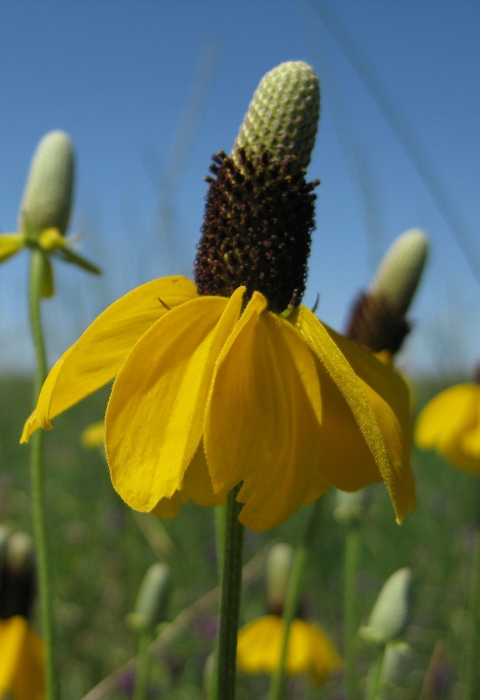What We Do
Wildlife conservation is at the heart of the National Wildlife Refuge System. It drives everything on U.S. Fish and Wildlife Service lands and waters managed within the Refuge System, from the purposes for which a national wildlife refuge national wildlife refuge
A national wildlife refuge is typically a contiguous area of land and water managed by the U.S. Fish and Wildlife Service for the conservation and, where appropriate, restoration of fish, wildlife and plant resources and their habitats for the benefit of present and future generations of Americans.
Learn more about national wildlife refuge is established to the recreational activities offered to the resource management tools used. Using conservation best practices, the Refuge System manages Service lands and waters to help ensure the survival of native wildlife species.
Management and Conservation
Prescribed Fire
Historically, frequent fires maintained native grasslands by preventing most woody plant species from becoming well-established. However, during the 1900's, these fires also destroyed the homes, possessions, and crops of European Americans. These settlers then made it a priority to prevent fires as much as possible. Suppressing fires for more than 100 years allowed trees, shrubs and brush to expand over the prairie landscape, leading to changes in native wildlife communities. Over the years, these changes were gradually recognized, and the importance of fire as a management tool became known and more fully understood.
Fire is an important aspect of prairie restoration and maintenance. Prescribed burning is used to mimic the effects of natural fires. Fire is essential to maintaining the health and diversity of the northern mixed grass prairie ecosystem. Fire is used to remove vegetation litter, reduce the spread of non-native and woody plant species, and stimulate healthy, vigorous native forb and grass habitat.
Livestock Grazing
Herds of bison once grazed the grasslands of this region, stimulating the native grasses to "tiller", or spread, using their root systems. When grasses tiller, they can fill in areas cleared of trees, shrubs, and exotic, invasive grasses like smooth bromegrass and Kentucky bluegrass. As bison herds diminished, the composition of grassland plant and animal species began to change dramatically. Today, cattle are used to mimic the effects of bison. Grazing is an extremely important tool for maintaining a diverse and healthy northern mixed grass prairie ecosystem.
Grazing is a management practice that can maintain or improve the health of prairie plants when used correctly. By varying the intensity, frequency, and timing of grazing, Refuge staff can target exotic, invasive grasses and weeds, reduce the amount of ground litter, and increase the vigor and diversity of native vegetation. Appropriate grazing management over the long-term results in improved habitat conditions for grassland nesting birds and other wildlife.
Invasive Species Control
The spread of invasive weeds hinders management efforts to restore and maintain healthy, diverse mixed grass prairie. Leafy spurge and yellow toadflax are perhaps the most difficult weeds to manage and control. Treatments beyond fire and grazing are used to control these and other invasive weed species. Other management techniques currently used include biological control, mechanical removal, and herbicide application.
Our Services
At this field station, we offer the following public services:
- A small contact station with local hunting and wildlife viewing information.
- Educational and wayfinding brochures.
- Environmental education programs for local schools and groups (contact Refuge manager).
- Administration of cooperative agriculture programs.
- Issuance of Special Use Permits.
- Project reviews related to energy development when U.S. Fish and Wildlife Service interests are involved.
Laws and Regulations
U.S. Fish and Wildlife Service follows Federal laws, policies, and treaties passed throughout history. Click on the "Laws and Regulations" tab under "What We Do" to learn about important acts that pertain to Lostwood National Wildlife Refuge.
